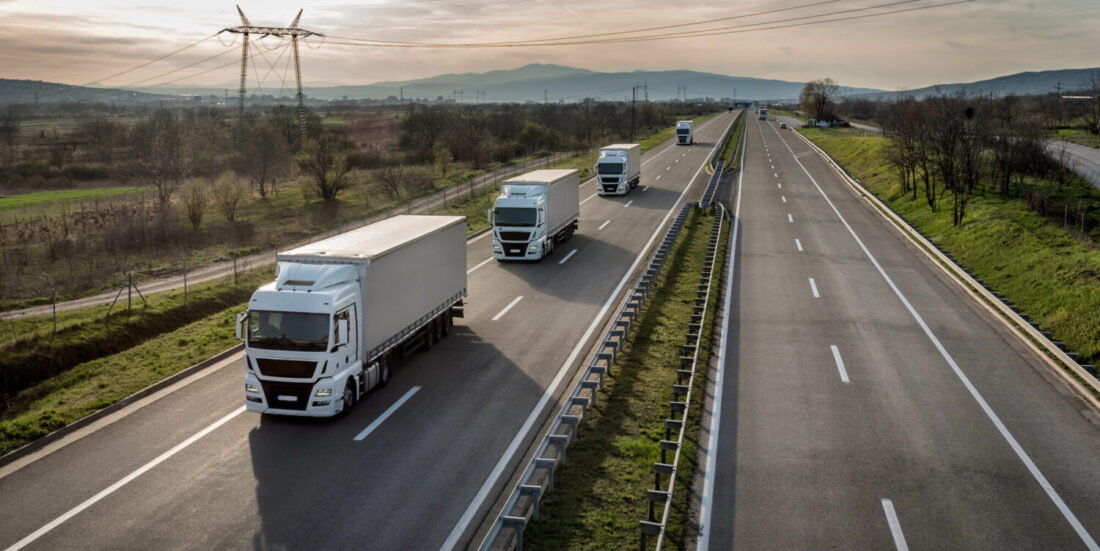Fast charging stations can be built more quickly with these 3 tips
It is essential to speed up electrification of the Norwegian heavy transport sector. We believe that this is possible in spite of full capacity utilisation in the electricity grid. Here are our three recommendations.
Norway has achieved a great deal when it comes to the electrification of passenger cars and light goods vehicles, and this is essential if we are to meet our climate change mitigation targets. It only remains now to provide a similar boost to the heavy transport sector. But for this to happen, we need a charging infrastructure in place that enables a transition to the use of electric heavy goods vehicles (eHGVs) to be perceived as easy and attractive to small and large businesses alike.
Capacity overloads in the electricity grid are currently preventing electrification of the Norwegian transport sector. For this reason, we have to find solutions that prevent us from taking too long to connect our EV charging infrastructure to the grid.
With just three smart moves we can build most of the new charging stations we need without having to expand grid capacity.
A single fast charging station with multiple charging points for cars and eHGVs may easily consume electricity running to a maximum of several megawatts (MW). This is equivalent to the consumption of well over a hundred standard family homes. In many cases, the grid will have to be expanded to accommodate the capacity needed to serve these charging stations, especially if they are located in sparsely-populated districts with limited grid capacity. But this costs the charging operators money, and it may take several years before a charging station is permitted to connect to the grid if upgrades are required.
With just three smart moves we can build most of the new charging stations we need without having to expand grid capacity.
- Firstly, it is important here in Norway that we think innovatively about our selection of the location and size of our future fast charging stations. This requires combining the charging operators’ insights into where and when the greatest need for such stations will arise, with the grid operators’ knowledge of the capacity in their systems.
Charging operators should be made aware of where there is spare capacity in the grid, and grid operators must be informed about plans for the building of new charging stations. We may assume that an eHGV charging infrastructure will be developed in connection with existing or planned energy stations and 24-hour driver rest areas. For this reason, value chain actors will have to consult closely with each other, and the grid operators will have to prepare themselves to accommodate the future charging needs of the transport sector at various locations in the roads network. An optimal development of such an infrastructure, integrating grid capacity with charging needs, will have positive spin-offs both for charging prices and grid tariffs for us all.
Research projects have taught us that the electricity grid has in fact more spare capacity than that which is often assumed when new connection projects are being assessed. Data analysed by researchers at SINTEF and NTNU as part of the ‘FuChar’ project has demonstrated that the maximum available output allocated to EV charging stations is only very rarely utilised to the full. For the greater part of the day, only a small fraction of this allocation is utilised, and any periods of high consumption are of short duration. It remains to be seen whether this phenomenon is transferable in the case of eHGVs.
Research projects have taught us that the electricity grid has in fact more spare capacity than that which is often assumed when new connection projects are being assessed.
- We believe that local investment in new technology at individual charging stations may be highly beneficial when it comes to speeding up the roll-out of a charging infrastructure. This is at the heart of our second recommendation, which is all about identifying technologies that best exploit the available grid capacity. We are thinking here both of smart systems that control electricity supply to and from the chargers while also supporting the grid, and of batteries that serve to shave output peaks, even if these batteries are expensive. These technologies will also make it possible to install a greater number of charging points at each location without expanding grid capacity.
- Our third recommendation is to make greater use of so-called conditional connection contracts. These will enable charging operators and grid companies to enter into either interim or permanent grid connection agreements.
Our figures indicate that the use of charging stations is increasing year on year, much as expected following record sales of electric vehicles in recent years.
The parties themselves can agree on the terms of such contracts. For example, it may be a condition that the charging operator can limit consumption or even disconnect during periods when the grid is close to full capacity, or that the capacity allocated to a given charging station will vary depending on the time of day. This will allow the charging operator to achieve the rapid development of the charging station, and at the same time avoid any expenditure linked to grid expansion – a so-called facility investment contribution. If implemented correctly, connection contracts of this type present only very minimal disadvantages to the customers charging their vehicles and the electricity grid. The charging operators risk no loss of revenue, and the grid operator risks no capacity overloads in the grid.
Our figures indicate that the use of charging stations is increasing year on year, much as expected following record sales of electric vehicles in recent years. The electrification of HGVs is now fast approaching. We are seeing growing sales in electric vehicles and the consequent need for more charging stations.
At some time in the future, it is possible that the utilisation of charging stations will approach the maximum capacity allocated from the grid. Until this happens, any allocated access to capacity that is not fully utilised will continue to delay the installation of new charging stations and prevent the full electrification of the entire transport sector.
The rapid and intelligent development of a charging infrastructure for the heavy transport sector is not only vital in terms of meeting our domestic climate change mitigation targets. By continuing to spearhead the development of transport sector electrification in the same way as we have been doing in the passenger car sector, Norway’s technologies and experience can continue to contribute to more rapid electrification in other countries as well.
A summary version of this article was published in the daily Aftenposten on 3 October 2023.



